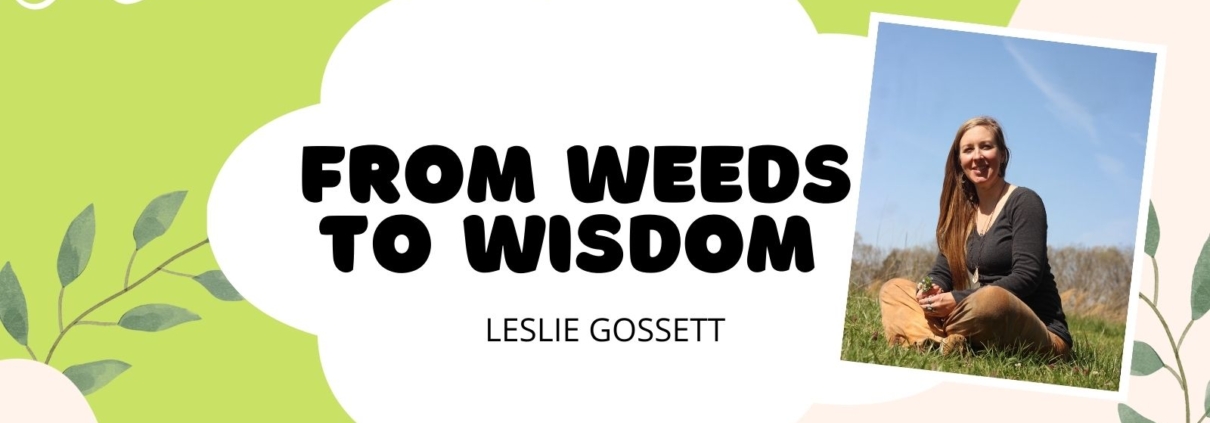From Weeds to Wisdom
By Leslie Gossett
I find it so ironic that people spend so much money, time, and energy on maintaining a lawn of monoculture non-native grass. They physically rip up and/or poison the abundance of other plants naturally growing in these spaces. How have we gotten here?
What most people call weeds are free food and medicine. And I don’t just mean they could pass for food or medicine. Some of these weeds are more powerful at infection fighting than pharmaceutical drugs, and more nutritious than cultivated vegetables. But this wisdom has been lost to younger generations.
Our ancestors, before there were pharmacies and grocery stores, would have obviously relied on the land in the ways I describe. But at some point, the knowledge of healing and edible plants got lost. It’s time to reclaim that knowledge. This knowledge is our human birthright. This earth is filled with abundance, if we only know how to find it.
It doesn’t matter if you have 500 acres of land, or just access to a grassy median. There is food and medicine to be found. It can sometimes feel overwhelming to figure out where to start, though. I get it. There is so much to learn. But here are some steps you can take TODAY to start turning your weeds into wisdom.
-
Get a good quality plant field guide that is specific to your region
-
Spend time observing the plants that grow near you- start to familiarize yourself with things like the shape of a plants leaves, whether the leaves have smooth or jagged edges, how many petals the flower has, etc. You will need to know these characteristics to use a field guide. Most of them use the scientific terms, but have definitions right there.
-
Choose one plant to start with. It’s easiest if you can find a plant in flower. Work with just that plant and use your field guide’s key to answer the questions about how the plant looks until you find out what it is.
-
Research edible and medicinal properties of that plant (there are many herb and foraging guides that can be handy for this purpose, but googling the right way can get you there too).
-
Finally, once you are 100% confident in your plant, start to work with it. Harvest it, eat it, dry it, make a tea.
If you can do this with one plant, you can do it with all plants. Seek out people to show you the ropes. Most State and National Parks have guided plant identification walks- start joining those. Take an herbalism class. Find foraging classes. Invited foragers or herbalists to your land to help you with identification.
What will you rely on when access to medicine dwindles? When food supply chains dry up? The time to open yourself to this knowledge is now.


Leave a Reply
Want to join the discussion?Feel free to contribute!